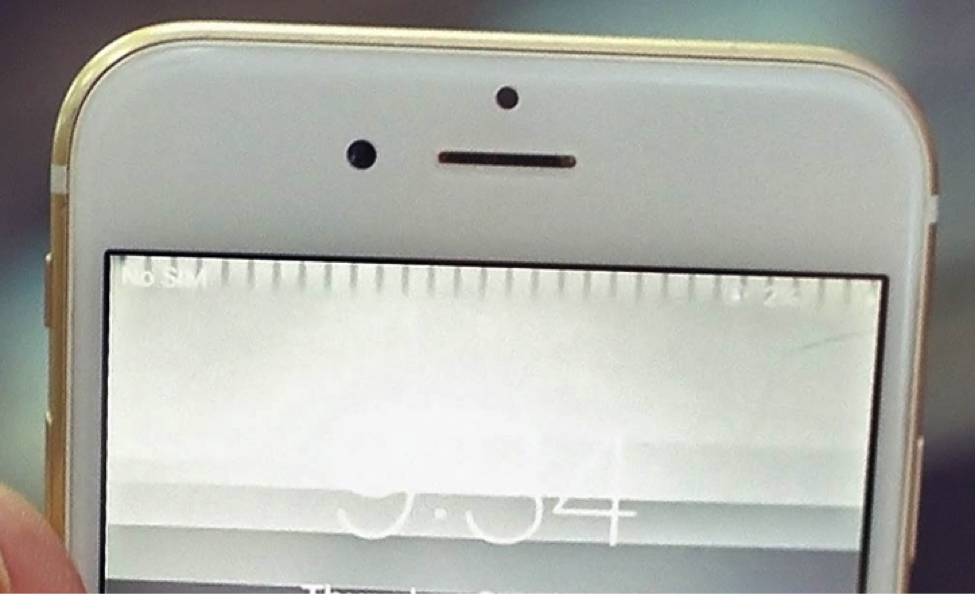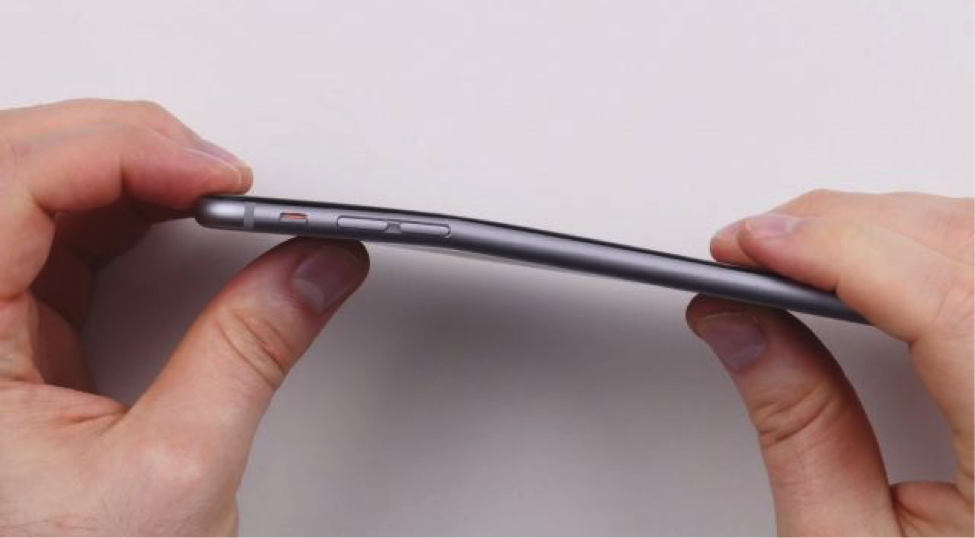Its name ignites the imagination, but the reason behind the deadly sounding affliction is a lot less exciting then what the mind can conjure up. Touch Disease is an internal fault found within the iPhone 6 and 6 Plus touchscreen that can result in frustrating display anomalies.

What Are the Symptoms
Touch Disease starts with a flickering grey bar at the top of the touchscreen. Depending on how you use the phone while it flickers, the grey bar may take up just a slim line or it can grow to take up as much as one-third of the screen. The defect eventually freezes the display, making the haptic screen unresponsive to touch for periods at a time.
Why Does it Happen
Rough handling isn’t the culprit, though it doesn’t help. The reason why so many iPhones are struck by Touch Disease is due to a flaw in its motherboard. The main circuit board consists of chips that reads gestures of your fingertips and converts them into actions onscreen.
This board is unusually flexible in the 6 and 6 Plus models and can bend during normal use. With enough warping, these important chips can lose a proper connection to the board, which results in the grey bar and frozen screens.
How Do You Fix it
There’s no you involved, first of all, unless you’re an experienced electronic solderer. Those chips need to be resoldered to the motherboard, which takes considerable skill in order to complete successfully. Depending on the condition of your circuit board, the only way to fix this issue is to replace it entirely.
When the first reports of the issue appeared, Apple kept relatively quiet about their role in its solution. The Cupertino-based company only offered to help those with valid warranties. For those beyond their warranty’s lifespan, they were out of luck. Even then, the solution didn’t necessarily solve anything. Apple merely swapped out the afflicted handset for a refurbished 6 which could also suffer from Touch Disease later on, for the price of $519!
Unsurprisingly, Apple received a lot of flak for their treatment of the situation. Since then, the company has offered to repair any screen suffering from Touch Disease for $228.95, and it will reimburse those who had paid more for an earlier fix.
Underlying Factors In Play
The 6 line is notorious for its part to play in the bend-gate controversy. In Apple’s rush to create the thinnest and lightest phones, it’s suffered from what iFixit co-founder Kyle Wiens calls design anorexia. Its structure lacks such integral components that users have warped the entire handset. Affected iPhone 6 Plus phones were easily bent when kept in a back pocket.
In addition to warping, the 6 is incredibly easy to scratch, nick, and score, making it a popular model protected by dbrand. Though made from unassuming vinyl, their skins protect the impressionable aluminum from daily wear and tear, and the full selection of dbrand iPhone 6 skins comes in a variety of bright colors and textures, so no one even knows the handset is wrapped up in vinyl.
Newer models of the 6 and 6 Plus have a stronger aluminum chassis, which reduces the chances of accidentally bending the phone. An iPhone 6 skin, however, is still a helpful addition to any handset regardless of material, as it’s an easy way to prevent cosmetic damages from ruining the sleek lines of the phone.
If your 6 is suffering from Touch Disease, you have options. The real question becomes whether or not it’s worth fixing when Apple plans to release its commemorative iPhone 8 in time for the iPhone’s 10th anniversary in the fall. If your budget allows it, it might be worth the cost of upgrading to the brand new handset. If not, a call to dbrand is in your future.
Learn more
Apple Inc. decided to revolutionise its latest iteration of the iPhone when it launched the iPhone 6 and the iPhone 6 Plus in September of 201 ...
If you are in the market for the latest and greatest in iPhone technology, then consider yourself in luck. When shopping on your own, it can be co ...
IPhone is one of the most successful gadget of the world launched by Apple Inc. few year back. They are constantly upgrading its version and makin ...
Spy software is used to track a person’s location, personal information stored inside the phone, starting from text messages, photos, videos and o ...
Techies agree that the Pebble smartwatch is a great addition to your smartphone. Link it up to your iPhone or Android, and you’ve got all of your ...








